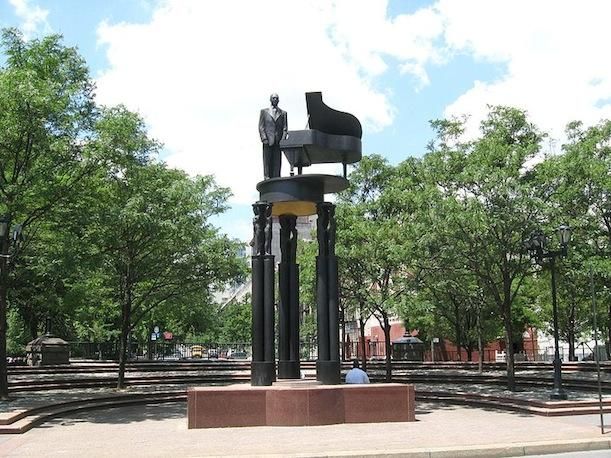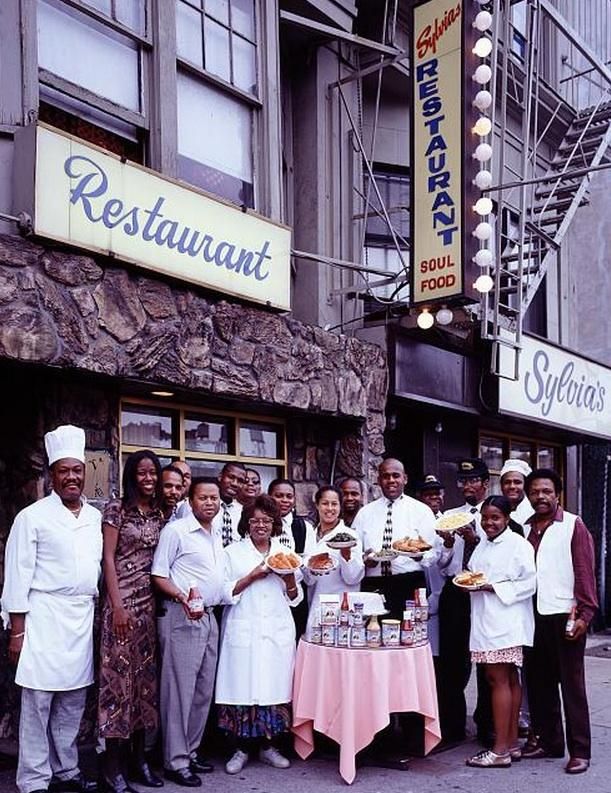How Harlem Put Itself Back on the Map
Historian John Reddick looks at the people behind the neighborhood’s recent reemergence as a thriving destination in the public eye
/https://tf-cmsv2-smithsonianmag-media.s3.amazonaws.com/filer/20130522105039Ilan-Costica_Thumb.jpg)
Just a block from Harlem’s great thoroughfare, 125th Street, is a brownstone listed for a cool $2.3 million, courtesy of the Corcoran Group Real Estate. Advertising its proximity to the subway and trendy restaurants like Red Rooster, the listing provides a snapshot of the dramatic changes underway in the Manhattan neighborhood. Projects like the expansion of the Harlem Hospital Center and the plans for Columbia University and rezoning efforts have brought a wave of development interest to Harlem, which suffered along with the rest of New York during the 1970s when the city was verging on bankruptcy.
In the process, the profile of the neighborhood, long considered the Mecca of African-American culture, has changed. According to census data for Central Harlem, the population of white residents grew by more than 400 percent between 2000 and 2010. In the meantime, the average sale price for housing in Central Harlem increased 270 percent from 1996 to 2006, the fourth largest increase of all neighborhoods city-wide. Starting at the north edge of Central Park on 110th Street, real estate interests staked their claims. Glossy businesses like the hotel chain Aloft moved in.
But for all the attention paid to the changing skyline and demographic profile, Harlem historian and architectural consultant John Reddick argues there’s more beneath the surface of Harlem’s development. He says the roots of the community’s development have long been building to this economic high note, and that despite the common conception that much of this change has come from the outside, it’s established community members who brought it about.
The fight for affordable housing, for better schools, for renovated properties–all that, he says, came from the community itself. “There were people who lived there during the worst of times and really made a commitment and who were part and parcel of the genius to turn things around,” says Reddick, who has lived in the neighborhood since 1980, ”and nobody knows who they are!”
In part to rectify that error and to highlight the ways Harlem inspires and innovates in the design fields, Reddick has been curating a series and lectures and programs in conjunction with the Cooper-Hewitt titled, “Harlem Focus Series,” that will continue through the summer. Museum director Caroline Payson says the series, “encourages people to think about design in their own backyard.”

Reddick has done much of his work in the neighborhood on memorial projects and in the parks, which he calls the “treaty grounds for everybody.” Whether as a place to walk a dog or to hold a barbecue for a birthday party, the parks draw everyone in. His favorite park space is at the north end of Central Park by the Harlem Meer lake, where the landscape is rockier and hillier. “It’s very different from the rest of the park.”
But it’s the people as much as the parks that make Harlem the inviting neighborhood he remembers from his first visit in 1965. “As an African-American, it was just mythic,” he remembers. “I just was energized by all of it. I knew I’d end up here.” Neighborhood staples like the churches felt familiar to Reddick. Others were attracted by that same energy.
Now Harlem is home to a large percentage of African immigrants concentrated on 116th Street, in addition to a growing Asian and Hispanic population. All around him, Reddick says he can see the global influences taking shape in Harlem as it orients itself on a wider stage. Even Harlem’s most famous rapper today, A$AP Rocky borrows from rap cultures around the country in his music while still representing the “pizzazz, spunk, charisma, character” he says is indigenous to his childhood home.
“I think Harlem is this amazing brand,” says Reddick, “greater than Chanel.” And yet, he says, its story has been stunted in the telling.
Reddick’s own research into the Jewish and black roots of music in Harlem prior to the Harlem Renaissance challenges the idea that Harlem was “happening” in discrete moments. Outside historians and writers, he says, are “like explorers in the black community and once they document it, they’re like Columbus: history starts when they decide Harlem is improving or it has value and so it diminishes anything that was there before.”
Harlem’s recent economic development has brought a similar reading. But Reddick says the changes that are just now starting to bring attention have been a long time coming. Fights like the one that kept Marcus Garvey Park, with its amphitheater and swimming pool, public and available to the community helped protect major neighborhood assets.

Decades before City Council speaker Christine Quinn stopped by Make My Cake in Harlem as she set about laying the groundwork for her mayoral bid, JoAnn Baylor was baking up her tasty and addictive creations in her basement, according to a profile of the business on DNAInfo. In 1996, the family opened their first shop. Now with two locations, the shop is co-owned by Baylor’s daughter and has irregular hours which don’t hurt the demand one bit. Though its success was made visible by high-profile patrons and inclusion in a Small Business Saturday American Express campaign, the roots of the business were long part of the neighborhood.
Or there’s the American Legion Post 138 on West 132nd Street in Harlem, whose weekly Sunday jazz jam session was ranked the best free Uptown jazz in 2012 by the Village Voice and is one of Reddick’s personal favorites. Though the show was started in the late 90s, its organizer, Seleno Clarke, has been playing organ professionally for more than 40 years. His connections to Harlem musicians help him keep a steady rotation of guest artists, in addition to the international musicians who also stop by.
The creative, collaborative spirit that enlivens the American Legion is precisely the sort that first attracted Reddick to Harlem and what he hopes to highlight with his Cooper-Hewitt series. “There are creative people who have this energy.” When people talk about things like rooftop gardens and urban farming, he says “people in Harlem are thinking about this, it’s not just happening in other well-to-do neighborhoods.”
The series continues May 22 with architect Jack Travis, who will discuss the Harlem Hospital’s Mural Pavilion, connecting Works Progress Administration-era murals by African-American artists to contemporary African-inspired color palette, pattern and philosophy.
/https://tf-cmsv2-smithsonianmag-media.s3.amazonaws.com/accounts/headshot/Leah-Binkovitz-240.jpg)
/https://tf-cmsv2-smithsonianmag-media.s3.amazonaws.com/accounts/headshot/Leah-Binkovitz-240.jpg)